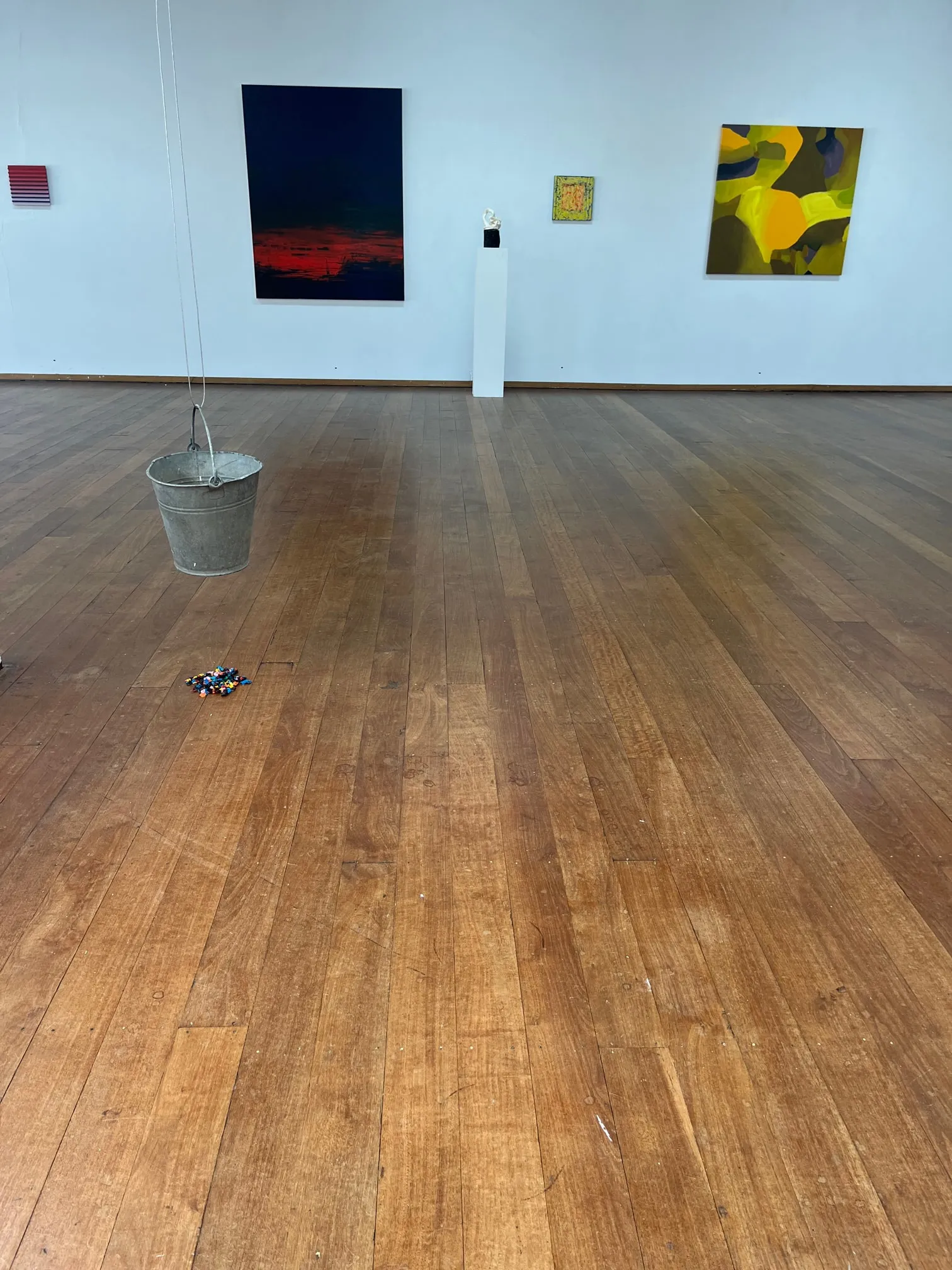
VISUAL CONVERSATIONS
21 May 2022 – 5 Jun 2022
I invited 16 artists to take part in this exhibition : the majority from Perth and rural Western Australia, but also the Netherlands, Scotland and the United States. As an exercise in the iteration of subjective freedom, it was intended as a forum to make work outside any totalizing thematics which, as Tom McGlynn notes, have come to condition everyday social relations largely due to an inescapable sense of contemporary interconnectedness. Screen based media dominates the world - there is an aggressive visuality of contemporary mass culture with its incessant thrust of instantly recognisable images, and reductive simplifications.' There is also an almost obsessive insistence on justification that reduces process and object (and subjects) to narratives, obliterating the act of making and usurping things, including individuals, into exchange economies/discourses. In the 1990s Dave Hickey foresaw the trend and warned against the anti-democratic thrust of having to be aware, and in possession, of 'theory' in order to apprehend and appreciate visual art. 'Contrarian provocateur that he was, he asked audiences to rely on their eyes not their intellect and to look for beauty – not as some kind of platonic idea or eighteenth-century aesthetic notion, but as the emotional, visceral and immediate experience of [any] given audience, when looking at visual art.' Talking about how visual art makes us feel is not the same as when art is made and consumed in terms of discourses. Commodification of practice is something most artists negotiate individually, but exchange economies/discourses increasingly function as hyperobjects - things that commodify us without our awareness and exceed our apprehension, undermining individual freedom by writing subjects and their activities, before the fact. As Philip Guston termed it this is the 'name it and nail it' fundamentally anti-egalitarian model of knowledge as power.
As an exercise in how we unwittingly comply with external models of art making (and self) I asked these practitioners (for this exhibition) to simply immerse themselves in a dialogue with their personal conditions of being where they did not use their work as a tool to articulate a prefigured concept, and to watch for the moment (s) they found themselves subjecting their work to concerns over things like reception, topicality and so on. That moment of awareness, where the intimate relationship between self, work and world is noticeably affected and directed by external non-creative forces and pre-existing judgements, is revelatory and one where artists have choices over what the resulting conversation will be. Instead of a dialogue which subordinates activity to linguistics/discourses, visual conversations are related more to reciprocity and an understanding of the world that is tacit – we know more than we can say in our perceptual relationship with our phenomenal world and the expression of that in our work. This other 'look' doesn’t grasp at things in order to describe something else, it apprehends, it allows things to speak. We can show how our personal experiences (material and psychological) entwined with our corporeality, are the result of us freely engaging with our world and making work that speaks TO the world, of things not yet said (especially by others).
In the words of Mark Titmarsh, ‘A grasping look is a fallen kind of looking that crushes what is seen with a predetermined intention, while apprehending is ‘not yet a “looking at” but is a more subliminal and pre-discursive “catching sight” of something. In the moment of apprehending the seer is no longer one who sees and knows' but perhaps one who understands the creatively indeterminate nature of art and life.
Non-intent, or, questioning the tyranny of curatorial premise, at Osmos by Tom McGlynn (Two Coats of Paint)
The Whitney Biennial: On the heels of trauma by Sharon Butler (Two Coats of Paint)
Expanded Painting - Ontological Aesthetics and the Essence of Colour by Mark Titmarsh